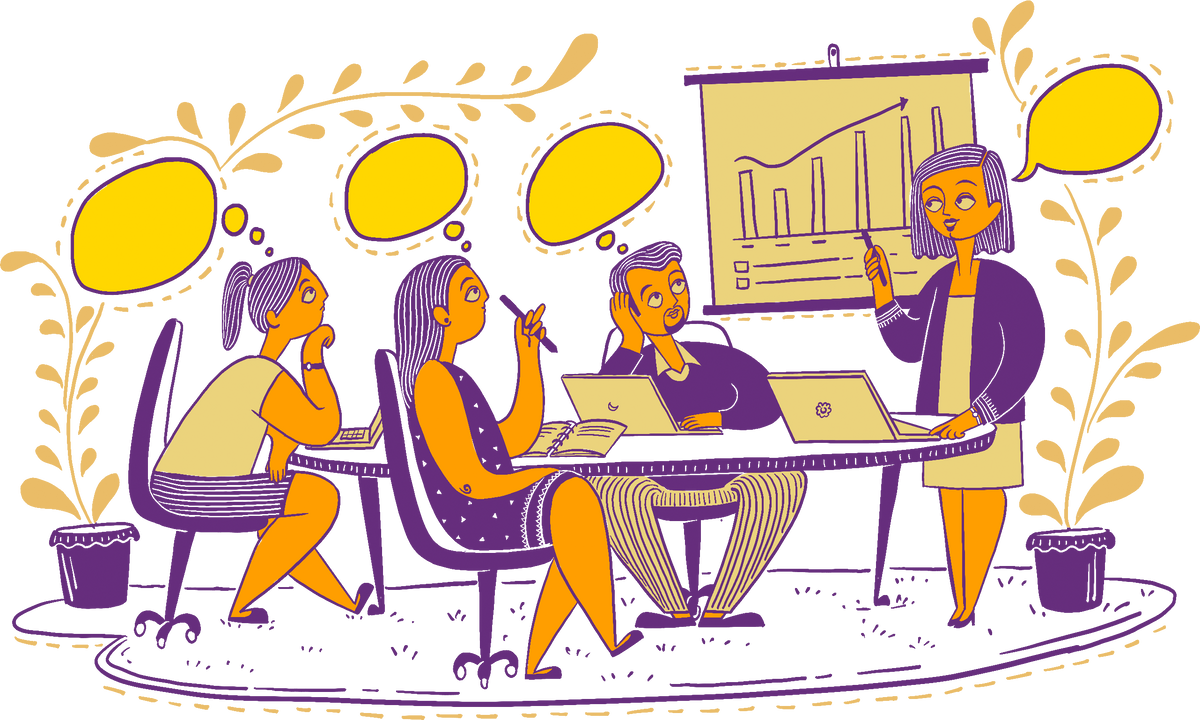5 Visual Messages You Need to Have in Your Workplace to Drive Awareness about Suicide Prevention

In a fast-paced, and demanding work environment like yours, it’s relatively common to feel exhausted when working continuously. This can take a toll on your and your employees’ mental health, in the short and long run. To ensure wellbeing is duly nurtured in your workplace, you need to make certain that everyone has ready access to help and resources should they need them.
Sensitizing your workforce, and inculcating help-seeking behavior can encourage destigmatization and foster discussions faster than you expect. This will provide an open environment for your employees to speak up about the issues they face, which is crucial to getting the peer support and the professional help they require.
One easy but effective step in this direction is visual messaging. Let us look at how your workplace can benefit from it more closely.
Power of consistent visual messages in the workplace
When people are exposed to a message or a piece of communication long enough, they begin to internalize it. The process may be unconscious, but the essence of the message gets deeply rooted in your people’s minds. Consistent messaging is a powerful tool to normalize mental health conversations and foster help-seeking. This step can save lives.
Along with mental-health-friendly messages, you can also share helpful wellbeing resources that may come in handy anytime.
Do people have access to well-being resources at your workplace?
When making wellbeing resources available to your employees, it is important to make them easily accessible. This is crucial as inaccessible resources defeat the purpose of investing in them. Here’s a checklist to know if your entire workforce has access to your helpful resources.
Does everyone possess an emotional crisis helpline number?
Emotional crises can happen irrespective of the time and location. For this reason, everyone within the organization should possess an emotional crisis helpline number. It can prevent mishaps from occurring and can provide immediate emotional first aid to those in need.
Whom do they approach to seek professional help?
Employees must know who to reach out to when seeking professional help. Are your employees aware of your EAP providers and therapists? Take a quick survey and you’ll know. Based on the results, take steps to showcase how your workforce can seek help.
Do they know whom to confide in if they are going through emotional turmoil?
When faced with emotional turmoil, they may need to confide in another person to lift the weight off their chest. They must know who to turn to during emotional turmoil in the organization. This can be their colleague, peer, or even an employer. That’s why Manah equips managers and colleagues with the skills and know-how to offer emotional first-aid, at the right time.
5 visual messages you need to publicize in your workplace today
Emotional crisis helpline
Consistently display the emotional crisis helpline throughout your company – near the cafeteria, elevators, staircases, water coolers, and so on. This is to ensure employees are aware and have easy access to the helpline whenever required.
Details of those trained in suicide prevention gatekeeping in your company
Providing details of employees trained in suicide prevention gatekeeping within the organization is important. Gatekeepers can act like first responders when it comes to suicide prevention. They can provide comfort and be a supportive peer to suicide-ideating individuals. If you haven’t trained your employees in suicide prevention, start today with the QPR suicide prevention gatekeeping training with Manah Wellness. Register here.
Resources to seek counseling support
Counseling support is crucial for the long-term improvement of a person’s well-being. Install notice boards and pin the details of counselors. Additionally, it reinforces the positive connotations of counseling and discourages any stigma.
Wellbeing tips and uplifting messages
Sometimes, simply having visual messages of wellbeing tips and uplifting messages can be sufficient to remind employees to take care of themselves. They can empower and motivate your employees to seek help and work on themselves.
Quotes from the leadership encouraging emotional well-being and help-seeking behaviors
Having a leader who speaks openly about emotional well-being and mental health can set a positive tone within the organization. They will be role models, walk the walk, and encourage employees to seek help and open up about their troubles in safe spaces.
Impact you’ll start seeing if you exhibit wellbeing resources
Implementing these visual messages and wellbeing resources in the workplace can have several positive effects.
- Reduced Stigma: Open conversations about mental health and suicide prevention can reduce the stigma associated with seeking help.
- Improved Employee Wellbeing and Adversity Prevention: When employees know where to turn for support, they are more likely to seek help early.
- Enhanced Productivity: Employees with better emotional well-being tend to be more engaged, focused, and productive.
- Stronger Employee Retention: A supportive workplace culture that values emotional well-being can help retain talented employees.
- Positive Organizational Reputation: Demonstrating a commitment to mental health can enhance an organization's reputation as an employer of choice.
Conclusion
Promoting suicide prevention and emotional well-being in the workplace is not just a moral obligation; it's a strategic investment in the health and productivity of your employees.
Consistent messaging, access to resources, and visual reminders can create a workplace culture that values mental health and encourages help-seeking behaviors.
Overall, investing in visual messaging will improve your employees' mental health, consequently giving employers a healthier and happier workforce.
Want us to bring in expert-created, carefully curated wellbeing resources for your organization?
Fill out the contact form here, and we’ll get in touch with you, to kickstart your workforce’s wellbeing journey.
